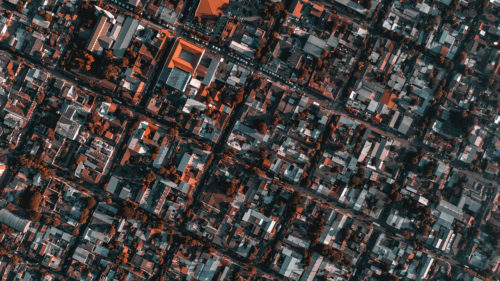
The Aimsun Next Web Map Service (WMS) Importer
June 2021: Geline Canayon guides you through adding a Web Map Service (WMS) or Web Map Tile Service (WMTS) server link to add background aerial images to your model.
By Dimitris Triantafyllos
February 2022
SCATS is an intelligent, adaptive traffic control system installed in over 55,000 intersections across 187 cities and 28 countries worldwide. SCATS adaptive traffic management system synchronises traffic signals to optimise traffic flow across a whole city, region or corridor. Intelligent algorithms process real-time data to adapt traffic signal timings that respond to unexpected conditions, predict traffic patterns and keep traffic moving. The result is a reduction in congestion, shorter journey times and increased safety and productivity.
The SCATS ITS application is intended mainly to provide data regarding the state of the server and geometry information on each SCATS site for visualization purposes. This information can be also used to import SCATS intersections´ layout, signal groups, detectors in a new SCATS layer in Aimsun Next. These data can be automatically matched with an existing network geometry in Next, so that SCATS signal groups and detectors will be created on top of an existing network. However, the user should verify that the data imported in the SCATS new layer are matching correctly to the existing network layer. Once the signal groups in the Aimsun Next network are verified to be correct, control plans that match those defined in SCATS can be imported. Also, when detectors are labelled as they are in the SCATS layer, count measurements from SCATS logs can be imported.
Note the following important requirements:
Note: For this quick guide, we used information from SCATS Central Manager Configuration user manual.pdf and SCATS Central Manager user manual.pdf. In the graph below, it is displayed the configuration of all different servers required and the default ports that each one communicates with the other to run the SCATS ITS Interface in the SCATS Terminal.
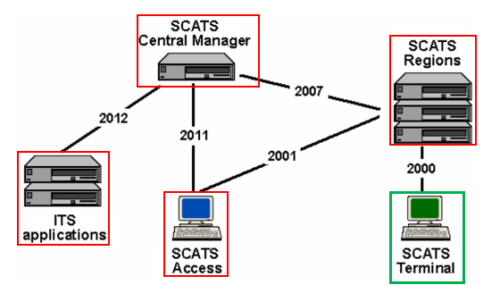
To setup the SCATS Central Manager you need the following data:

You can request this data from Transport for New South Wales or the SCATS local distributor.

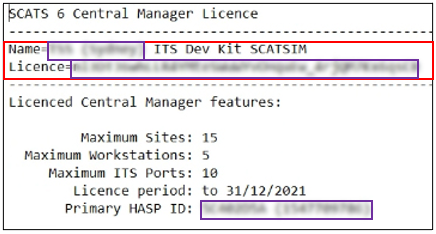
You can request this data from Transport for New South Wales or the SCATS local distributor.
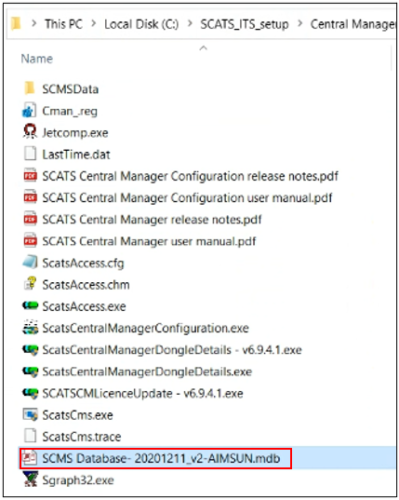
At this point we need to clarify that the folder i.e.: SCATS_ITS_Setup \ Region is required to connect Aimsun Next with SCATSim. The folder SCATS_ITS_Setup\Central Manager\ Region is required to connect Aimsun Next with SCATS ITS.
The .tc, .lx and .ram files per region are required to connect Aimsun Next with the SCATSim application. The .hist and .vs files per region are required for SCATS ITS if users would like to import historical signal timings and historical count measurements.
See an example of the SCATS Region folder below:
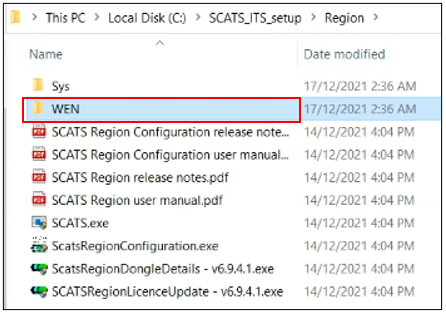

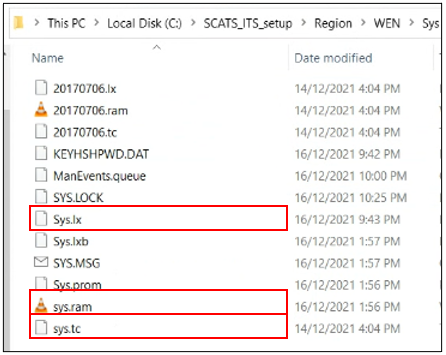
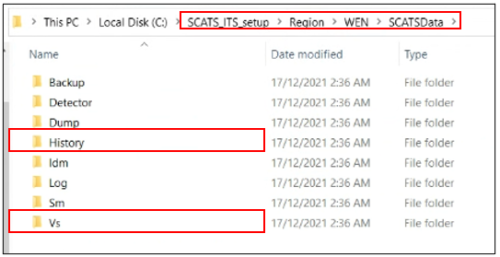
The Region folder should be also copied under the SCATS Central Manager folder; however the folder structure is different. The folder structure required is displayed in the screenshot below:
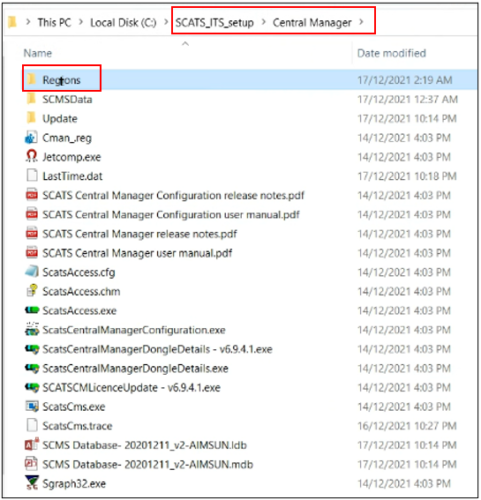


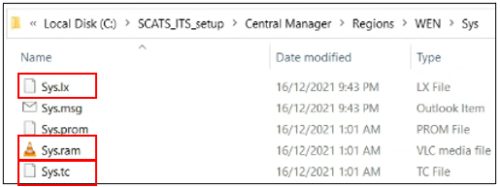

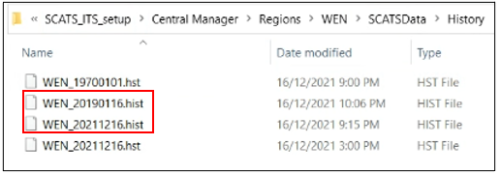

To let the SCATS applications connect to the SCATS database we must create an ODBC data source with the 32-bit ODBC Administrator in %windir%\SysWOW64\odbcad32.exe.

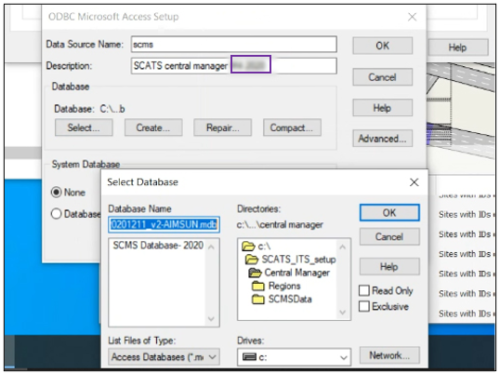
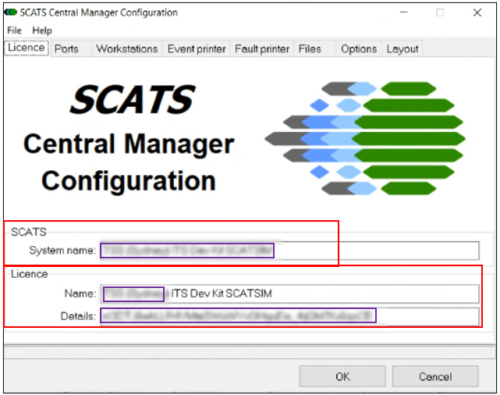
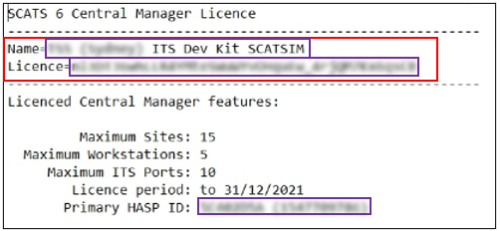
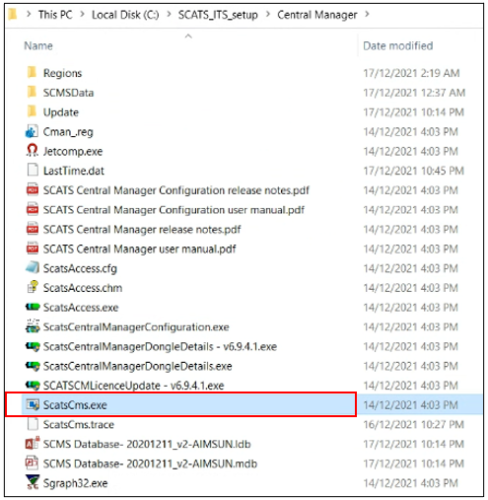
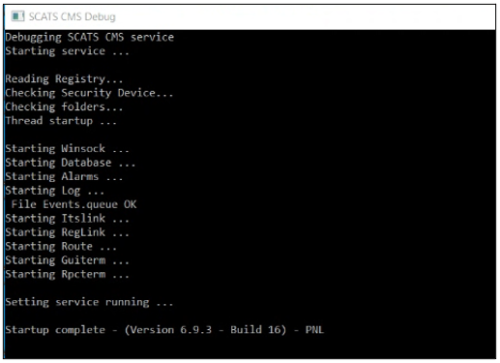
To import the SCATS data into an Aimsun Next traffic network, the relationship between objects in Aimsun Next and in SCATS ITS needs to be established. SCATS Database has internal identifiers for the objects that the server manages:
The mapping between SCATS Sites and the Aimsun Next objects can be done manually using an external column or with the help of the SCATS ITS Interface by importing geometry from SCATS ITS and performing a matching over the base network (manual verification of the matching is required). We will describe both modes in the following examples:
To launch the SCATS ITS Interface, go to the Main Menu, select Tools and then SCATS ITS Interface as displayed below:
The SCATS ITS Interface can request geometry information of the SCATS Sites from the SCATS ITS and build a representation of them in Aimsun Next. The imported geometry will be stored on a separated layer on top of the base network to make the task of verifying the number of lanes, the detector placement, the signal group naming, etc. easier.
In the SCATS ITS Interface dialog in the Tab “Geometry”, select the existing network in the base layer that the Aimsun Next nodes are assigned. The SCATS ITS Interface offers two main modes to start the importation of the SCATS Sites geometry, depending on the information already present in the base network:
A. In case the base network nodes do not have any SCATS Site ID stored in any of the external attributes, select the mode: Using a node as reference.
To import a specific list of SCATS Site IDs based on the reference SCATS Site ID, then in the “Source of Sites” select the “Use List of Sites” and enter the SCATS Site IDs separated with comma as displayed in the screenshot below:
This importation mode allows one node to be set as reference for the import of the rest of the SCATS Sites in the Aimsun Next network. In this case, information about this SCATS Site will be gathered, then information on neighboring SCATS Sites will also be requested. This way, SCATS Sites surrounding the reference one will be imported.
Note:
B. If the SCATS Sites are already identified (manually or from a previous importation) in Aimsun Next nodes via an external node attribute, then this external attribute can be used to import SCATS geometry on top of the identified nodes. Select the Mode: Use attribute on nodes as SCATS Site ID. Select the Attribute where the SCATS Site IDs are stored.
Note:
Once the importation process of the SCATS Sites geometry is finished, then:
SCATS ITS Interface can perform some automatic matching between the two layers: the “SCATS ITS Network” and the base network layer.
See an example of the parameters defined below:
See an example of the dummy Control Plan created below:
We recommend performing the matching of each object type separately (first signal groups, second detectors, third control plans and controllers) so that you will be able to verify that all data for all nodes have been imported correctly.
Verification checks:
Preparation:
Place the SCATS log files (detector count data: .vs, signal timings: .hist) to the /Central Manager/Region/REGIONNAME/SCATSData/History/ and /Central Manager/Region/REGIONNAME/SCATSData/Vs/ folders. These are files that hold daily data and their name is based on the corresponding date (i.e.: 20170601.hist or 20170601.vs)
Enjoy a video showing the procedure of importing SCATS data step-by-step using the SCATS ITS Interface.
To perform such verification, we can use the SCATS Access application.

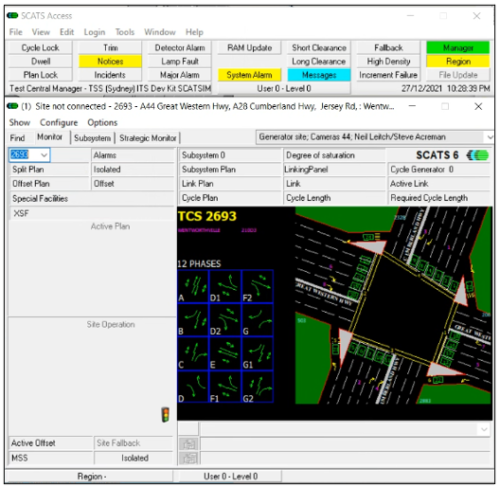

June 2021: Geline Canayon guides you through adding a Web Map Service (WMS) or Web Map Tile Service (WMTS) server link to add background aerial images to your model.

December 2020: Using the Aimsun Next interface with SIDRA signal design software helps you create more realistic models, reduces the calibration effort and improves the model performance.
SHARE
Aimsun Next 24
Aimsun (2024). Aimsun Next 24 User’s Manual, Aimsun Next Version 24.0.0, Barcelona, Spain. Accessed on: April. 16, 2024. [Online].
Available: https://docs.aimsun.com/next/24.0.0/
Aimsun Next 24
@manual {AimsunManual,
title = {Aimsun Next 24 User’s Manual},
author = {Aimsun},
edition = {Aimsun Next 24.0.0},
address = {Barcelona, Spain},
year = {2024. [Online]},
month = {Accessed on: Month, Day, Year},
url = {https://docs.aimsun.com/next/24.0.0},
}
Aimsun Next 24
TY – COMP
T1 – Aimsun Next 24 User’s Manual
A1 – Aimsun
ET – Aimsun Next Version 24.0.0
Y1 – 2024
Y2 – Accessed on: Month, Day, Year
CY – Barcelona, Spain
PB – Aimsun
UR – [In software]. Available:
https://docs.aimsun.com/next/24.0.0/